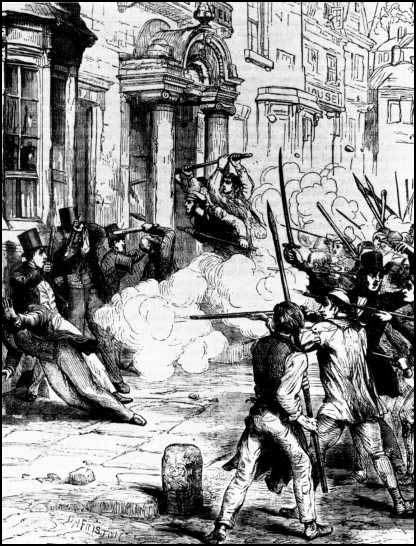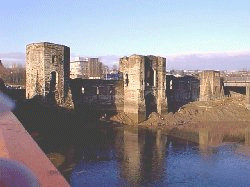The History of Newport.
The Chartist Riots.

Newport was the scene of the Chartists riots in the 19th Century. In May 1838, Henry Vincent was arrested for making inflammatory speeches. He was tried on the 2nd August at Monmouth Assizes and was found guilty and sentenced to 12 months imprisonment. He was denied all writing materials and all books, except books on religion. Chartists in Wales were furious and several outbreaks of violence occurred. John Frost called a huge protest meeting to show the strength of feeling against the imprisonment of Henry Vincent. The plan was to march on Newport where the Chartists would demand the release of Henry Vincent. The authorities of Newport were heard what the Chartists were planning, and realised that if they were successful, it would encourage others in Britain to try the same thing. When John Frost, Zephaniah Williams, William Jones and the five thousand marchers arrived in Newport, they discovered that several chartists had been arrested and were being held in the Westgate Hotel. They marched to the hotel and started chanting, "Surrender our prisoners". The soldiers inside the hotel started firing. Over twenty men were killed and about fifty were wounded. John Frost, and the others involved in the march were arrested, charged with high treason, and were sentenced to be hung, drawn and quartered. Many people were shocked by this and protest meetings took place all over Britain. On the 1st February, the Prime Minister, Lord Melbourne, announced that the men would be transported for life instead of being executed. John Frost was sent to Tasmania and worked as a clerk for three years, and then as a schoolteacher for eight.
Newport Castle.

Newport Castle was built on the banks of the River Usk between 1327 and 1386 by Hugh D'Audele or his son Ralph, who was Earl of Stafford. It has a projecting Central tower with a water-gate or dock beneath it. Flanking this are two octagonal towers with prominent spur buttresses. These mark the North and South end of the Castle, from which a curtain wall ran westwards enclosing a rectangular area. Outside the curtain area was a deep moat that filled with seawater at high tide.
The next building phase came in the second quarter of the 15th Century when the castle was strengthened and embellished for Humphrey Stafford, who became first duke of Buckingham. The most important alteration was the raising of the North Curtain wall, and the heightening and modernizing of the South Tower. After the 3rd Duke of Buckingham was beheaded in 1521, the castle was neglected, and was in ruins by the 18th Century. The castle has been restored in places, although much of the original stonework has survived.
Newport Castle had an active life of only about 200 years, and was probably not occupied for very much of this time. At the beginning of the 16th Century Henry VIII's Uncle, Jasper Tudor, lived there.